Influence of Loading Waveform on the Fatigue Life of 34CrNi3MoVA Steel
Abstract
1. Introduction
2. Materials and Methods
3. Experimental Results and Analysis
3.1. Metallographic Structure and Properties
3.2. Fatigue Life
3.3. Fatigue Fracture Behavior
3.4. Fatigue Life Prediction Model
4. Conclusions
Author Contributions
Funding
Data Availability Statement
Conflicts of Interest
References
- Barat, K.; Sivaprasad, S.; Kar, S.K.; Tarafder, S. Low-cycle fatigue of IN 718: Effect of waveform. Fatigue Fract. Eng. Mater. Struct. 2019, 42, 2823–2843. [Google Scholar] [CrossRef]
- Liu, X.Y.; Chen, L.J.; Zhou, G.; Wang, B.S. Effect of strain waveform on low-cycle fatigue properties of inconel 625 alloy. Rare Met. Mater. Eng. 2021, 50, 1263–1269. [Google Scholar]
- Prasad, K.; Sarkar, R.; Ghosal, P.; Kumar, V. Effects of strain waveform on low cycle fatigue behavior of near a timetal 834 titanium alloy. Mater. Des. 2011, 32, 1710–1715. [Google Scholar] [CrossRef]
- Wang, R.Z.; Bo, C.; Zhang, X.C.; Tu, S.T.; Wang, J.; Zhang, C.C. The effects of inhomogeneous microstructure and loading waveform on creep-fatigue behavior in a forged and precipitation hardened nickel-based superalloy. Int. J. Fatigue 2017, 97, 190–201. [Google Scholar] [CrossRef]
- Zeng, L.R.; Lei, L.M.; Luo, X.M.; Zhang, G.P. Toward an understanding of dwell fatigue damage mechanism of bimodal Ti-6Al-4V alloys. J. Mater. Sci. Technol. 2022, 108, 244–255. [Google Scholar] [CrossRef]
- Zeng, L.R.; Wang, L.Y.; Hua, P.T.; He, Z.P.; Zhang, G.P. In-situ investigation of dwell fatigue damage mechanism of pure Ti using digital image correlation technique. Mater. Charact. 2021, 181, 111466. [Google Scholar] [CrossRef]
- Hu, Y.; Zhang, D.; Xu, L.Z.; Sun, T.Y.; Zhang, P.; Lei, J.C. Effect of notch on fatigue performance of marine shaft made of 34CrNi3Mo alloy steel under torsional loading. Int. J. Fatigue 2023, 175, 107790. [Google Scholar] [CrossRef]
- Cai, Z.D. Improvement of Heat Treatment Quality Issues for 34CrNi3Mo Steam Turbine Rotors and Spindles. China Chem. Ind. Equip. 2005, 1, 28–32. [Google Scholar]
- ISO 1099–2006; Metallic Materials—Fatigue Testing—Axial Force–Controlled Method. International Organization for Standardization: Geneva, Switzerland, 2006.
- Meyers, M.A.; Chawla, K.K. Mechanical Behavior of Materials, 2nd ed.; Cambridge University Press: New York, NY, USA, 2009. [Google Scholar]
- Suresh, S. Fatigue of Materials, 1st ed.; Cambridge University Press: Cambridge, UK, 1998. [Google Scholar]
- Zhang, Y.J.; Han, D.; Li, X.W. Improving the stress-controlled fatigue life of low solid-solution hardening Ni-Cr alloys by enhancing short range ordering degree. Int. J. Fatigue 2021, 149, 106266. [Google Scholar] [CrossRef]
- Chen, J.Z.; Zhang, B.; Song, Z.M.; Zhang, G.P. Biaxial tension-torsion fatigue properties of A588 steel weld joint for high-speed train bogie. Mater. Sci. Eng. A 2023, 865, 144634. [Google Scholar] [CrossRef]
- Li, R.H.; Zhang, Z.J.; Zhang, P.; Zhang, Z.F. Improved fatigue properties of ultrafine grained copper under cyclic torsion loading. Acta Mater. 2013, 61, 5857–5868. [Google Scholar] [CrossRef]
- Wang, Q.; Sun, Q.; Xiao, L.; Sun, J. Torsion fatigue behavior of pure titanium with a gradient nanostructured surface layer. Mater. Sci. Eng. A 2016, 649, 359–368. [Google Scholar] [CrossRef]
- Wang, R.; Shang, D.; Shen, T.; Li, L.S.; Yan, C.L. Damage parameters of two-spot welds using variation of natural frequency. Chin. J. Mech. Eng. 2007, 43, 74–79. [Google Scholar] [CrossRef]
- Zhang, X.Q.; Wang, D.; Zhang, J.; Lou, L.H. Effect of strain rate on the low cycle fatigue properties of Re-free Nickel-base single crystal superalloy. Chin. J. Mater. Res. 2011, 25, 231–236. [Google Scholar]
- Li, H.F.; Wei, J.L.; Li, S.H.; Liu, Y.Q.; Gu, X.H.; Liu, Z.C.; Yang, S.P. Fatigue life prediction of high-speed train bearings based on the generalized linear cumulative damage theory. Fatigue Fract. Eng. Mater. Struct. 2023, 46, 2112–2120. [Google Scholar] [CrossRef]
- Zhou, Z.Q.; Liu, X.S.; He, G.Q.; Liao, Y.P.; Liu, Y.F.; Liu, Z.; Wang, Q.G. Fretting fatigue behavior and damage mechanism of cast Al-Si-Cu-T6 alloy under two surface roughness conditions. Int. J. Fatigue 2023, 175, 107765. [Google Scholar] [CrossRef]
- Ostergren, W.J. A damage foundation hold time and frequency effects in elevated temperature low cycle fatigue. J. Test. Eval. 1967, 4, 327–339. [Google Scholar]
- Fan, Y.N.; Shi, H.K.; Tokuda, K. A generalized hysteresis energy method for fatigue and creep-fatigue life prediction of 316L(N). Mater. Sci. Eng. A 2015, 625, 205–212. [Google Scholar] [CrossRef]
- Jahed, H.; Varvanifarahani, A. Upper and lower fatigue life limits model using energy-based fatigue properties. Int. J. Fatigue 2006, 28, 467–473. [Google Scholar] [CrossRef]
- Koh, S.K. Fatigue damage evaluation of a high pressure tube steel using cyclic strain energy density. Int. J. Pres. Ves. Pip. 2002, 79, 791–798. [Google Scholar] [CrossRef]
- Ruan, W.D.; Shi, J.C.; Sun, B.; Qi, K.F. Study on fatigue damage optimization mechanism of deepwater lazy wave risers based on multiple waveform serial arrangement. Ocean. Eng. 2021, 228, 108926. [Google Scholar] [CrossRef]
- Li, K.S.; Wang, R.Z.; Xu, L.; Zhang, C.C.; Xia, X.X.; Tang, M.J.; Zhang, G.D.; Zhang, X.C.; Tu, S.T. Life prediction and damage analysis of creep-fatigue combined with high-low cycle loading by using a crystal plasticity-based approach. Int. J. Fatigue 2022, 164, 107154. [Google Scholar] [CrossRef]
- Zhang, S.D.; Takahashi, Y. Creep-fatigue life and damage evaluation under various strain waveforms for Ni-based Alloy 740H. Int. J. Fatigue 2023, 76, 107833. [Google Scholar] [CrossRef]
- Kanda, Y.; Kariya, Y. Influence of asymmetrical waveform on low-cycle fatigue life of micro solder joint. J. Electron. Mater. 2010, 39, 238–245. [Google Scholar] [CrossRef]
- Kawai, M.; Ishizuka, Y. Fatigue life of woven fabric carbon/epoxy laminates under alternating ratio loading along non-proportional path in the σm–σa plane. Int. J. Fatigue 2018, 112, 36–51. [Google Scholar] [CrossRef]

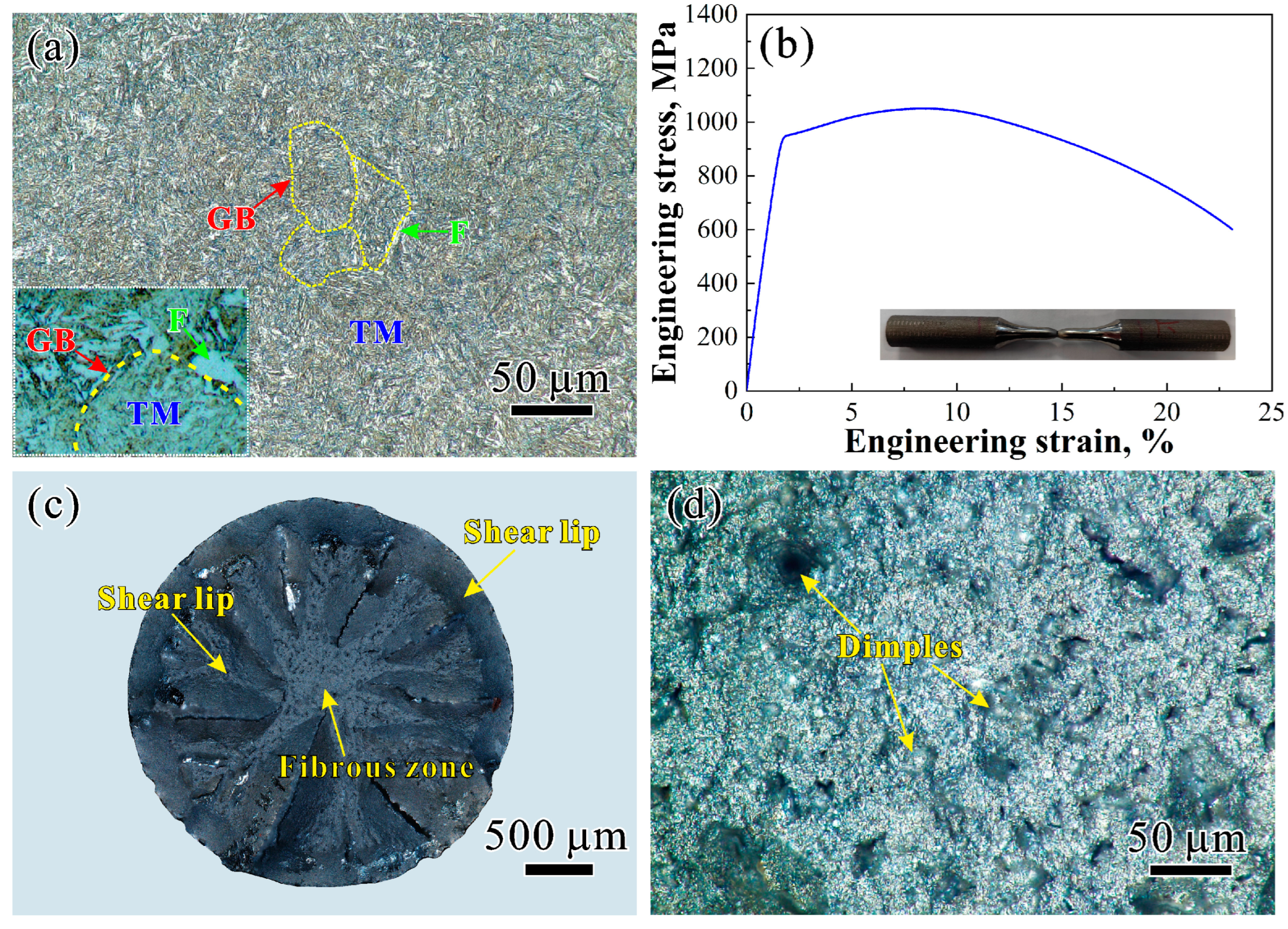

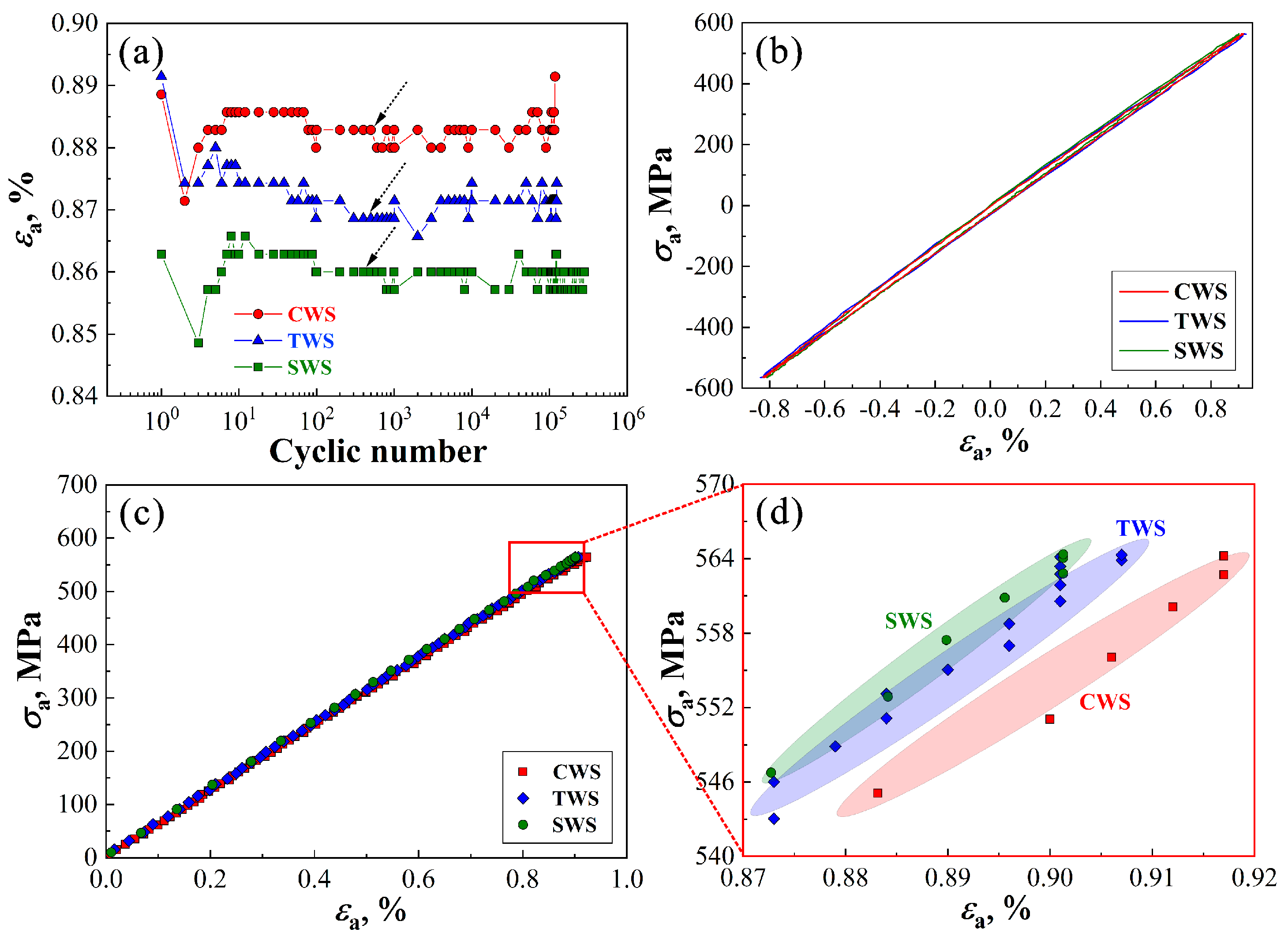
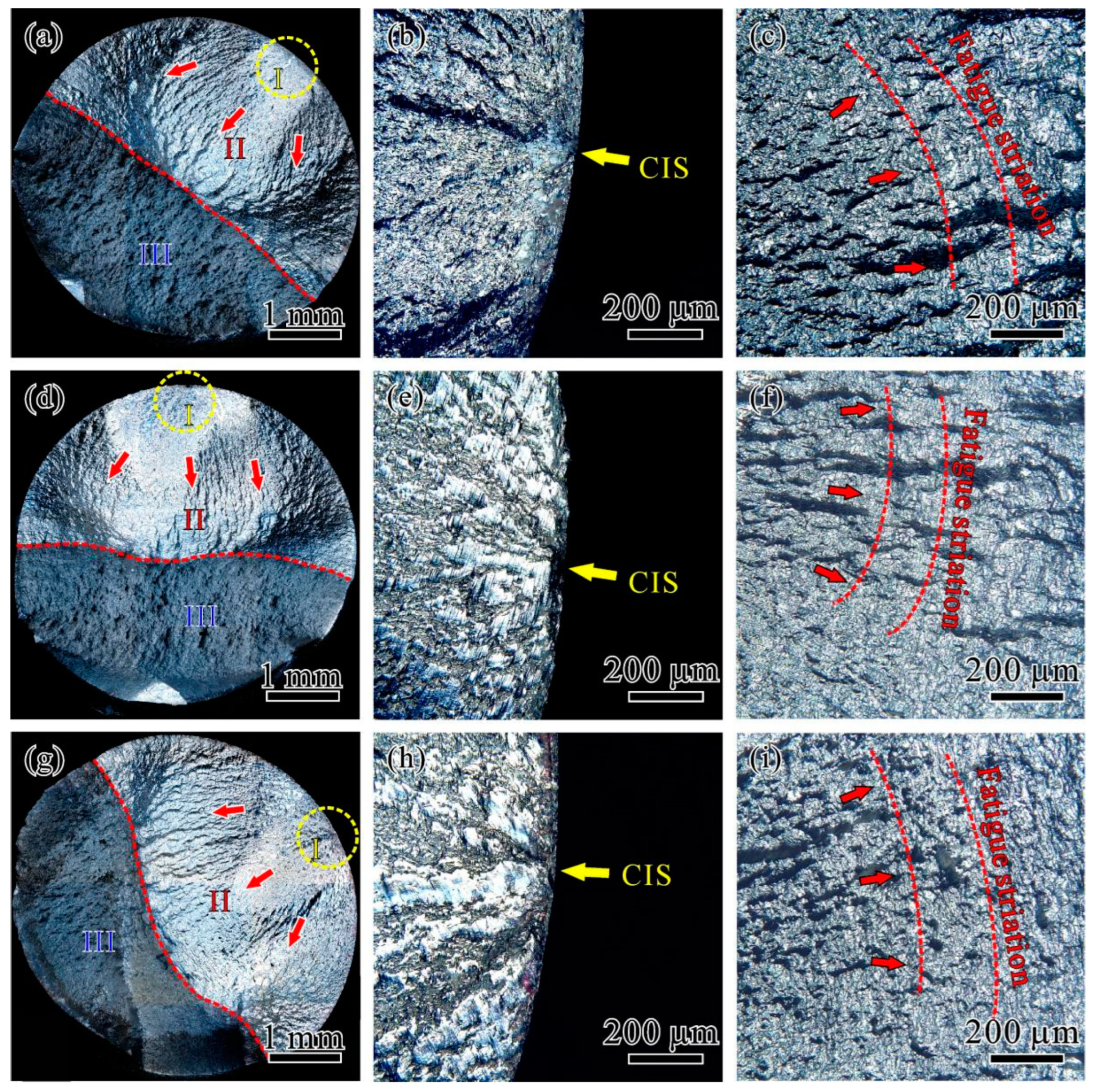
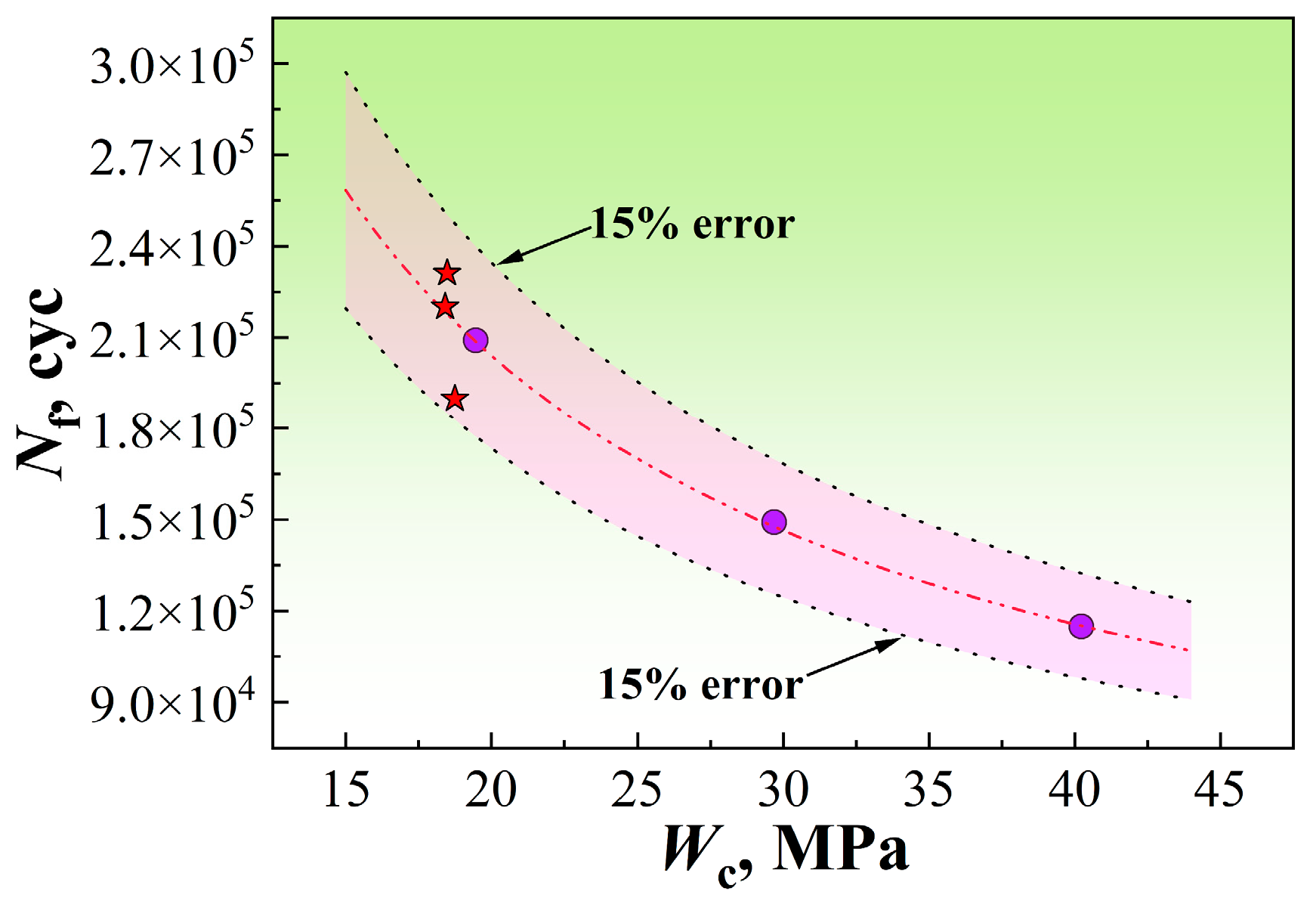
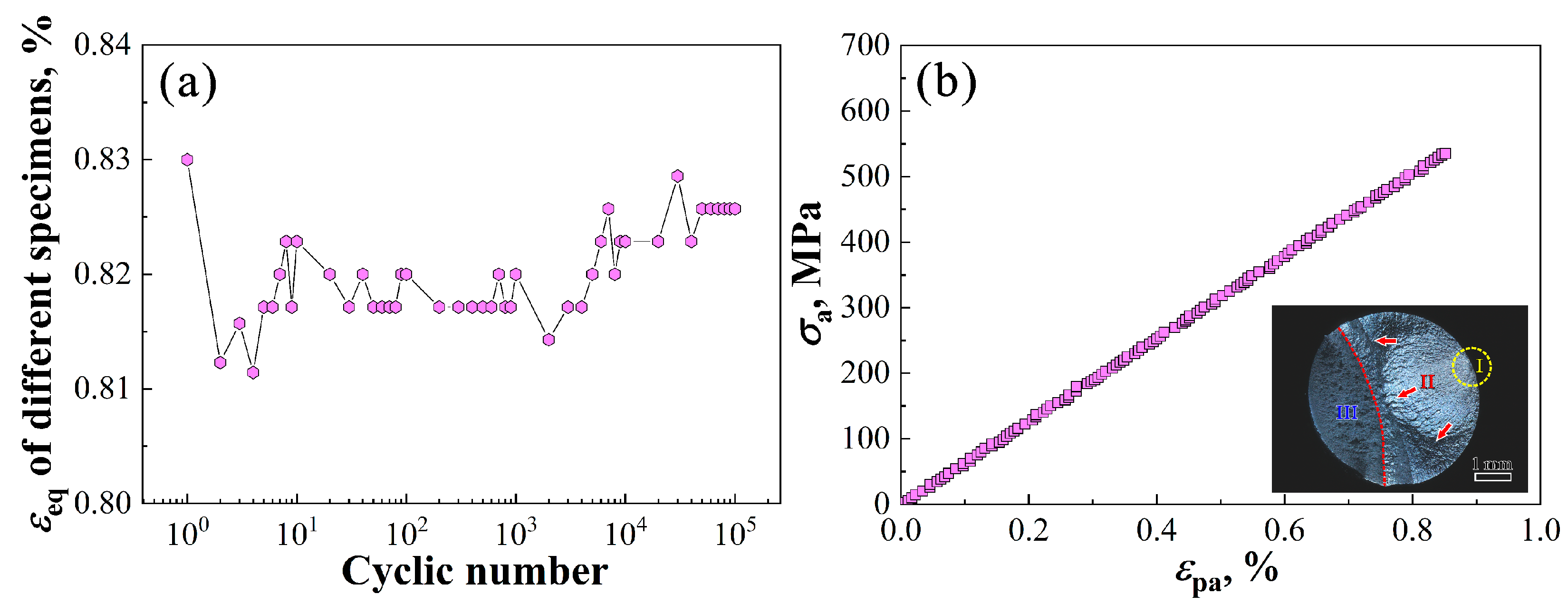
| Material | Chemical Composition (wt.%) | |||||||
|---|---|---|---|---|---|---|---|---|
| C | Si | Mn | Cr | Ni | Mo | P | S | |
| 32CrNi3MoVA | 0.35 | 0.22 | 0.72 | 0.91 | 3.27 | 0.51 | 0.018 | 0.017 |
| Specimen | σa/MPa | εa/% | K′ | n′ | Wc/MPa |
|---|---|---|---|---|---|
| CWS | 560 | 0.88 | 51,452 | 0.96 | 40.23 |
| TWS | 560 | 0.87 | 55,504 | 0.97 | 29.68 |
| SWS | 560 | 0.86 | 56,546 | 0.98 | 19.46 |
Disclaimer/Publisher’s Note: The statements, opinions and data contained in all publications are solely those of the individual author(s) and contributor(s) and not of MDPI and/or the editor(s). MDPI and/or the editor(s) disclaim responsibility for any injury to people or property resulting from any ideas, methods, instructions or products referred to in the content. |
© 2024 by the authors. Licensee MDPI, Basel, Switzerland. This article is an open access article distributed under the terms and conditions of the Creative Commons Attribution (CC BY) license (https://creativecommons.org/licenses/by/4.0/).
Share and Cite
Guan, X.; Tang, J.; Chen, J. Influence of Loading Waveform on the Fatigue Life of 34CrNi3MoVA Steel. Metals 2024, 14, 110. https://doi.org/10.3390/met14010110
Guan X, Tang J, Chen J. Influence of Loading Waveform on the Fatigue Life of 34CrNi3MoVA Steel. Metals. 2024; 14(1):110. https://doi.org/10.3390/met14010110
Chicago/Turabian StyleGuan, Xiaoyan, Jie Tang, and Jianzhi Chen. 2024. "Influence of Loading Waveform on the Fatigue Life of 34CrNi3MoVA Steel" Metals 14, no. 1: 110. https://doi.org/10.3390/met14010110
APA StyleGuan, X., Tang, J., & Chen, J. (2024). Influence of Loading Waveform on the Fatigue Life of 34CrNi3MoVA Steel. Metals, 14(1), 110. https://doi.org/10.3390/met14010110






